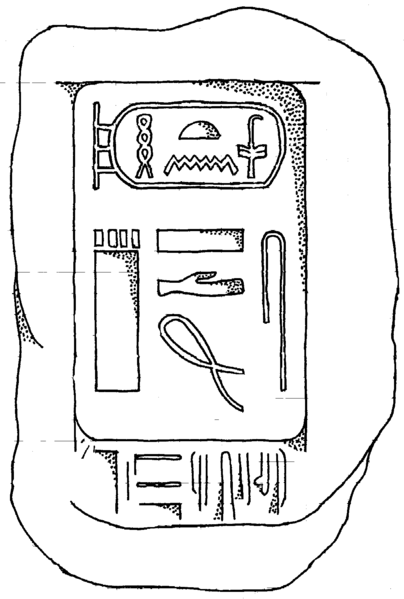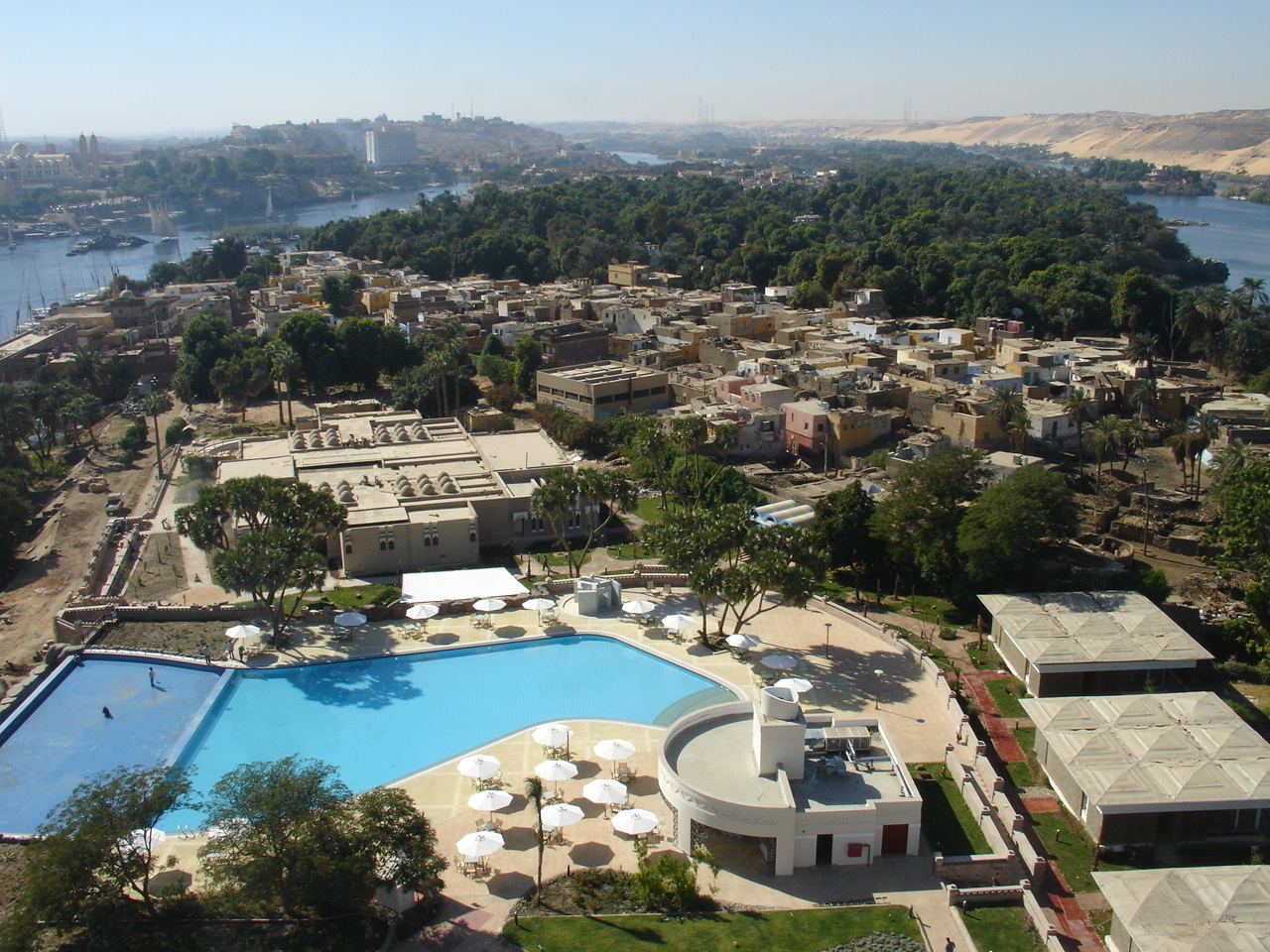|
Djefatnebti
Djefatnebti (also Djefatnebty) was an ancient Egyptian queen consort. She lived at the end of the 3rd Dynasty and may have been a wife of the last king of that dynasty, Huni.Francesco RaffaeleRoyal Women (queens, princesses) in early Egypt (Dynasty 0–3)/ref> Identity Djefatnebti’s name appears in one single, black ink inscription on an earthen beer jar, which was excavated at the eastern corner of Elephantine. Altogether three inscriptions were found. The first one mentions the "year of the followers of Horus" and the foundation of a building which name is lost due to damage. The second one mentions the "year of the 2nd time of the followers of Horus" and an "11th time of counting-the-fields at Heliopolis". The third one contains the notation "The king of Upper- and Lower Egypt appears", a "3rd time of battling the robbers" and the death of Djefatnebti. Since the "counting of the fields" was performed as a tax collection A revenue service, revenue agency or taxation autho ... [...More Info...] [...Related Items...] OR: [Wikipedia] [Google] [Baidu] |
Huni
Huni (original reading unknown) was an ancient Egyptian king, the last pharaoh of the Third Dynasty of Egypt during the Old Kingdom period. Based on the Turin king list, he is commonly credited with a reign of 24 years, ending c. 2613 BC. Huni's chronological position as the last king of the third dynasty is fairly certain, but there is uncertainty about the succession order of rulers at the end of the third dynasty. It is also unclear under which Hellenized name the ancient historian Manetho listed him in his ''Aegyptiacae'': mostly likely Aches, as Winfried Barta proposes. Many Egyptologists believe that Huni was the father and direct predecessor of King Sneferu, but this is questioned by other scholars. Huni is seen by scholars as a confusing figure in Egyptian history, because he was long remembered in Egyptian traditions, but very few documents, objects or monuments from his reign have survived. Attestations Huni is not a well attested pharaoh; most of the ... [...More Info...] [...Related Items...] OR: [Wikipedia] [Google] [Baidu] |
Third Dynasty Of Egypt
The Third Dynasty of ancient Egypt (Dynasty III) is the first dynasty of the Old Kingdom. Other dynasties of the Old Kingdom include the Fourth, Fifth and Sixth. The capital during the period of the Old Kingdom was at Memphis. Overview After the turbulent last years of the Second Dynasty, which might have included civil war, Egypt came under the rule of Djoser, marking the beginning of the Third Dynasty.Dodson, Hilton, ''The Complete Royal Families of Ancient Egypt'', 2004 Both the Turin King List and the Abydos King List record five kings,Toby A.H. Wilkinson, ''Early Dynastic Egypt'', Routledge, 2001 while the Saqqara Tablet only records four, and Manetho records nine,Aidan Dodson: ''The Layer Pyramid of Zawiyet el-Aryan: Its Layout and Context.'' In: ''Journal of the American Research Center in Egypt (JARCE)'', No. 37 (2000). American Research Center (Hg.), Eisenbrauns, Winona Lake/Bristol 2000, , pp. 81–90. many of whom did not exist or are simply the same king und ... [...More Info...] [...Related Items...] OR: [Wikipedia] [Google] [Baidu] |
Ancient Egypt
Ancient Egypt () was a cradle of civilization concentrated along the lower reaches of the Nile River in Northeast Africa. It emerged from prehistoric Egypt around 3150BC (according to conventional Egyptian chronology), when Upper and Lower Egypt were amalgamated by Menes, who is believed by the majority of List of Egyptologists, Egyptologists to have been the same person as Narmer. The history of ancient Egypt unfolded as a series of stable kingdoms interspersed by the "Periodization of ancient Egypt, Intermediate Periods" of relative instability. These stable kingdoms existed in one of three periods: the Old Kingdom of Egypt, Old Kingdom of the Early Bronze Age; the Middle Kingdom of Egypt, Middle Kingdom of the Middle Bronze Age; or the New Kingdom of Egypt, New Kingdom of the Late Bronze Age. The pinnacle of ancient Egyptian power was achieved during the New Kingdom, which extended its rule to much of Nubia and a considerable portion of the Levant. After this period, Egypt ... [...More Info...] [...Related Items...] OR: [Wikipedia] [Google] [Baidu] |
Queen Consort
A queen consort is the wife of a reigning king, and usually shares her spouse's social Imperial, royal and noble ranks, rank and status. She holds the feminine equivalent of the king's monarchical titles and may be crowned and anointed, but historically she does not formally share the king's political and military powers, unless on occasion acting as regent. In contrast, a queen regnant is a female monarch who rules ''suo jure'' (Latin for, "in her own right") and usually becomes queen by inheriting the throne upon the death of the previous monarch. A queen dowager is a widowed queen consort, and a queen mother is a queen dowager who is the mother of the current monarch. Titles When a title other than king is held by the sovereign, his wife can be referred to by the feminine equivalent, such as princess consort or empress consort. In monarchies where polygamy has been practised in the past (such as Morocco and Thailand), or is practised today (such as the Zulu people, Zulu ... [...More Info...] [...Related Items...] OR: [Wikipedia] [Google] [Baidu] |
Elephantine
Elephantine ( ; ; ; ''Elephantíne''; , ) is an island on the Nile, forming part of the city of Aswan in Upper Egypt. The archaeological site, archaeological digs on the island became a World Heritage Site in 1979, along with other examples of Upper Egyptian architecture, as part of the "Nubian Monuments from Abu Simbel to Philae" (despite Elephantine being neither Nubian, nor between Abu Simbel and Philae temple complex, Philae). The island has been studied through excavation sites. Aramaic Papyrus, papyri and Ostracon, ostraca have been collected to study what life was like on Elephantine during the time of ancient Egypt. There have been studies about the Elephantine Triad and the Jews, Jewish presence that formulated on the island. The standard reference collection of the Aramaic documents of the Elephantine papyri and ostraca, Elephantine Papyri and Ostraca is the ''Textbook of Aramaic Documents from Ancient Egypt''. Geography Elephantine, or what ancient Egyptians called ... [...More Info...] [...Related Items...] OR: [Wikipedia] [Google] [Baidu] |
Horus
Horus (), also known as Heru, Har, Her, or Hor () in Egyptian language, Ancient Egyptian, is one of the most significant ancient Egyptian deities who served many functions, most notably as the god of kingship, healing, protection, the sun, and the sky. He was worshipped from at least the late prehistoric Egypt until the Ptolemaic Kingdom and Egypt (Roman province), Roman Egypt. Different forms of Horus are recorded in history, and these are treated as distinct gods by Egyptology, Egyptologists."The Oxford Guide: Essential Guide to Egyptian Mythology", Edited by Donald B. Redford, Horus: by Edmund S. Meltzer, pp. 164–168, Berkley, 2003, . These various forms may be different manifestations of the same multi-layered deity in which certain attributes or Syncretism, syncretic relationships are emphasized, not necessarily in opposition but complementary to one another, consistent with how the Ancient Egyptians viewed the multiple facets of reality. He was most often depicted as ... [...More Info...] [...Related Items...] OR: [Wikipedia] [Google] [Baidu] |
Heliopolis (Ancient Egypt)
Heliopolis (Jwnw, Iunu; , 'the Pillars'; , ; ) was a major city of ancient Egypt. It was the capital of the 13th or Heliopolite Nome of Lower Egypt and a major religious centre. Its site is within the boundaries of Ain Shams and El Matareya, districts (''kism'') in northeastern Cairo. Heliopolis was one of the oldest cities of ancient Egypt, occupied since prehistoric Egypt.. It greatly expanded under the Old and Middle Kingdoms but is today mostly destroyed, its temples and other buildings having been scavenged for the construction of medieval Cairo. Most information about the ancient city comes from surviving records. A major surviving remnant of Heliopolis is the obelisk of the Temple of Ra- Atum erected by Senusret I of the Twelfth Dynasty. It remains in its original position (now in el-Masalla, El Matareya, Cairo). The high red granite obelisk weighs 120 tons (240,000 lbs) and is believed to be the oldest surviving obelisk in the world. Other obelisks, o ... [...More Info...] [...Related Items...] OR: [Wikipedia] [Google] [Baidu] |
Tax Collection
A revenue service, revenue agency or taxation authority is a government agency responsible for the intake of government revenue, including taxes and sometimes non-tax revenue. Depending on the jurisdiction, revenue services may be charged with tax collection, investigation of tax evasion, or carrying out audits. In certain instances, they also administer payments to certain relevant individuals (such as statutory sick pay, statutory maternity pay) as well as targeted financial support ( welfare) to families and individuals (through payment of tax credit A tax credit is a tax incentive which allows certain taxpayers to subtract the amount of the credit they have accrued from the total they owe the state. It may also be a credit granted in recognition of taxes already paid or a form of state "dis ...s or transfer payments). The chief executive of the revenue agency is usually styled as Commissioner, Minister, Secretary or Director. Revenue services by jurisdiction Refe ... [...More Info...] [...Related Items...] OR: [Wikipedia] [Google] [Baidu] |
Günter Dreyer
Günter Dreyer (5 October 1943 – 12 March 2019) was an Egyptologist at the German Archaeological Institute. In southern Egypt, Dreyer discovered records of linen and oil deliveries which have been carbon-dated to between 3300 BCE and 3200 BCE, predating the Dynastic Period. Academic career and findings He originally worked as a chemical laboratory assistant. He studied Egyptology, Assyriology, and ancient Near Eastern Archeology at the University of Hamburg (1969-1971) and Free University of Berlin (1971-1978). During his studies, he took part in excavations in Kamid al lawz in Lebanon, the Mortuary Temple of Seti I in Qurna, and on Elephantine. In 1978 he received his doctorate with a thesis on temple dedications from the early period and the Old Kingdom (''Der Tempel der Satet 1. Die Funde der Frühzeit und des Alten Reiches''). Between 1978 and 1987, Dreyer was a consultant in the Cairo department of the DAI and took part in excavations on Elephantine, in Wadi Garawi ... [...More Info...] [...Related Items...] OR: [Wikipedia] [Google] [Baidu] |
27th-century BC Women
The 7th century is the period from 601 through 700 in accordance with the Julian calendar in the Christian Era. The spread of Islam and the Muslim conquests began with the unification of Arabia by the Islamic prophet Muhammad starting in 622. After Muhammad's death in 632, Islam expanded beyond the Arabian Peninsula under the Rashidun Caliphate (632–661) and the Umayyad Caliphate (661–750). The Muslim conquest of Persia in the 7th century led to the downfall of the Sasanian Empire. Also conquered during the 7th century were Syria, Palestine, Armenia, Egypt, and North Africa. The Byzantine Empire suffered setbacks during the rapid expansion of the Caliphate and a mass incursion of Slavs in the Balkans which reduced its territorial limits. The decisive victory at the Siege of Constantinople in the 670s led the empire to retain Asia Minor, which ensured the existence of the empire. In the Iberian Peninsula, the 7th century was known as the ''Siglo de Concilios'' (century o ... [...More Info...] [...Related Items...] OR: [Wikipedia] [Google] [Baidu] |







